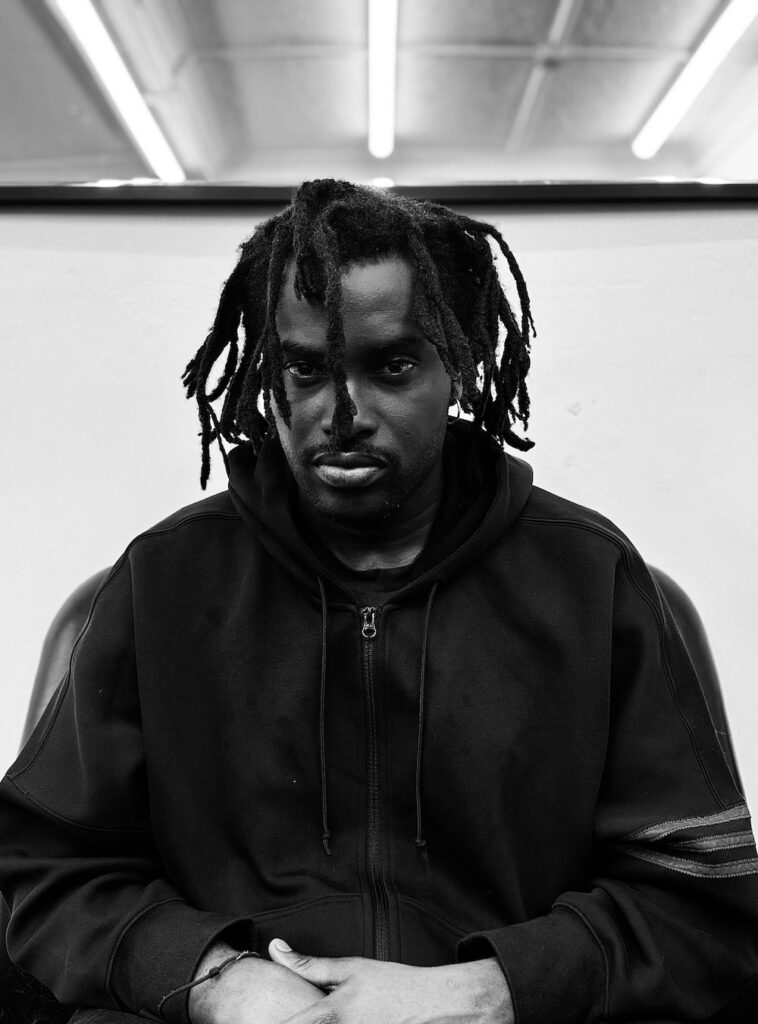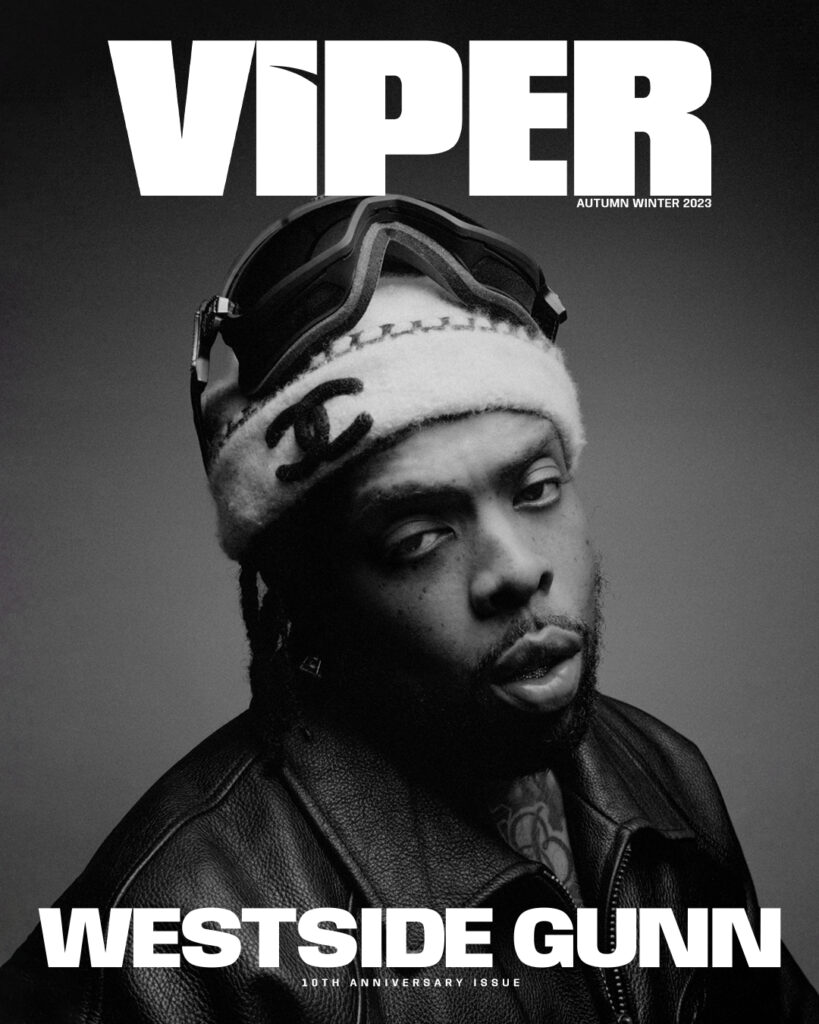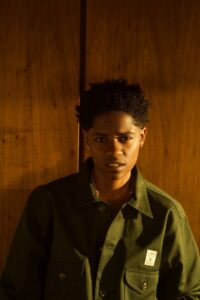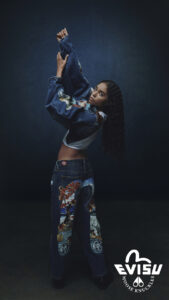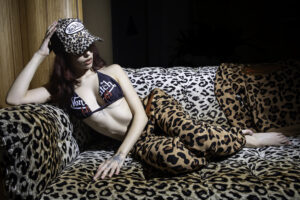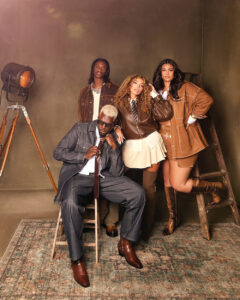AN INTERVIEW WITH SAMUEL BLANKSON: From the vibrant art scene of Accra, Ghana, to the digital canvases of London, Samuel Blankson has forged a path uniquely his own. A self-taught artist whose work masterfully fuses illustration with abstraction, Samuel’s journey is a testament to the power of a single idea: “Do whatever you want—just be so good at it.”
That mantra, given to him by a fellow artist, became the foundation for a career built on passion and purpose. Samuel’s art isn’t just a collection of images; it’s a living, breathing expression of his innermost thoughts and feelings. He navigates the balance between illustration and abstraction to capture the essence of what is both real and deeply felt. By incorporating meaningful quotes and traditional symbols, his work speaks directly to the soul, much like a conversation without words.
This dedication to his craft has led to powerful collaborations with musical giants like Black Coffee, Themba, and Fameye. The rhythm of their sound finds its way into his visual work, translating emotion and mood into colours, textures, and forms. As we dive into our conversation with Samuel, we explore the influences of legends like Basquiat and Picasso, the power of showcasing his art in his home country, and his vision for the future of the art scene.
Join us as we get to know the artist behind the art, a creative force who sees every piece as a blessing—a moment frozen in time that allows him to express his journey, his freedom, and his life.
Could you tell us about your journey into the world of digital art? Being self-taught, what were some of the initial challenges and pivotal moments in your artistic development?
I only got into digital art after seeing Ian Quachi’s work on Facebook. I messaged him, telling him my dad wasn’t supportive of me choosing art. He replied, “Do whatever you want—just be so good at it.” That stuck with me, art is difficult it’s a risk, yet never finished.” Digital art makes you work more and it’s saved me as an upcoming artist, I could afford art materials. I was never comfortable when I did the norm, got inspired by amazing Ghanaian artists and stayed focused.
Your work beautifully merges illustration and abstraction. How do you navigate the balance between these two distinct styles, and what does this fusion allow you to express?
When I want to express my feelings and thoughts, I use abstraction — because it invites anyone to connect in their own way. I often incorporate shadows to deepen that emotion. But when I paint what’s real, I still make it my own by adding traditional symbols and meaningful quotes. Images don’t always speak loudly — sometimes, it’s words that carry the real weight, reaching into the soul like data being transferred.
You’ve cited Picasso and Basquiat as inspirations. What aspects of their work resonate most deeply with you and how do you see their influence, consciously or subconsciously, in your own creations?
These souls are gifts to the world — they carved paths through silence, so creators like me could rise and feel divine.
Coming from Accra, Ghana, and then based in England, how has this geographical and cultural transition shaped your artistic perspective and the themes you explore in your work?
Expression is essential — no matter what, I remain true to myself. What moves me is what matters most, and life itself is my greatest muse.
You’ve collaborated with prominent musicians like Black Coffee, Themba and Fameye. How do these collaborations come about, and how does the energy and vision of music influence your visual art?
A blessing and a motivation. Collaborating with artists like Black Coffee, Themba, and Fameye has been a powerful experience. Most of these collaborations came about organically — through mutual respect and shared creative circles. Music carries a certain energy that speaks directly to the soul, and that rhythm often finds its way into my visual work. I translate the emotion, movement, and mood of the sound into colours, symbols, textures, and forms. It’s like having a conversation without words — letting their beats guide my brush.
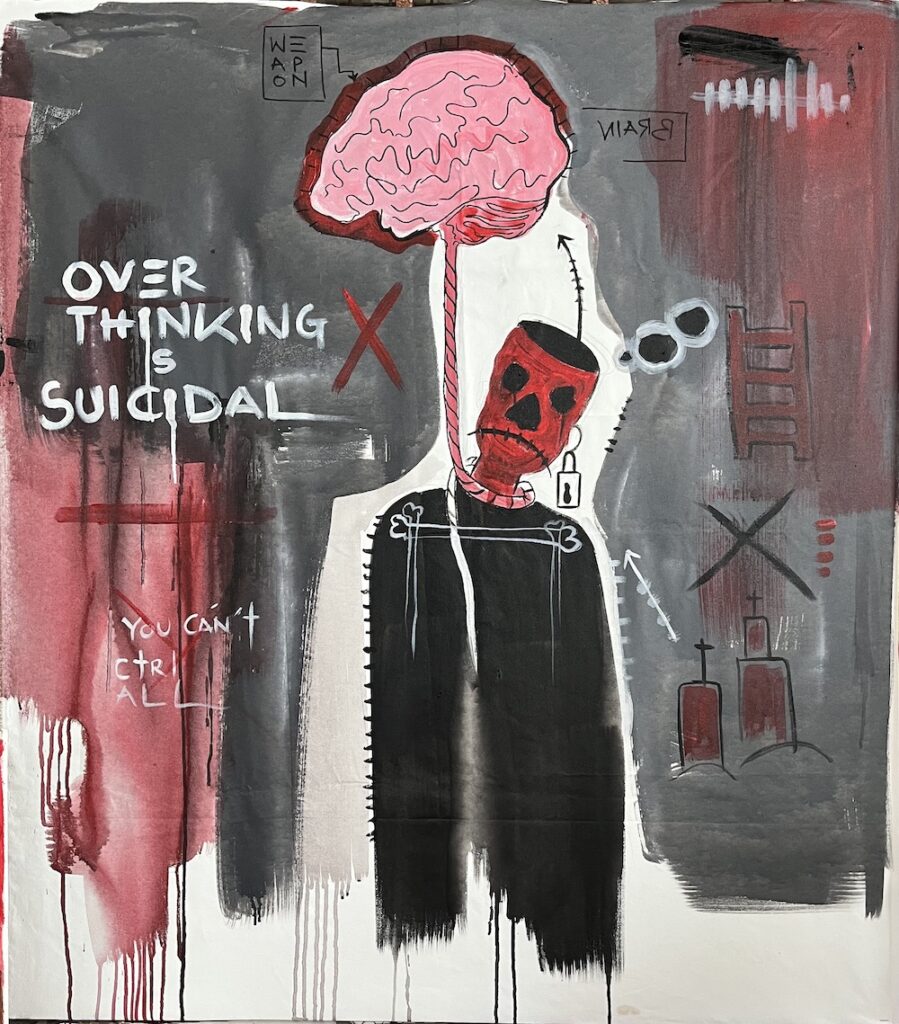
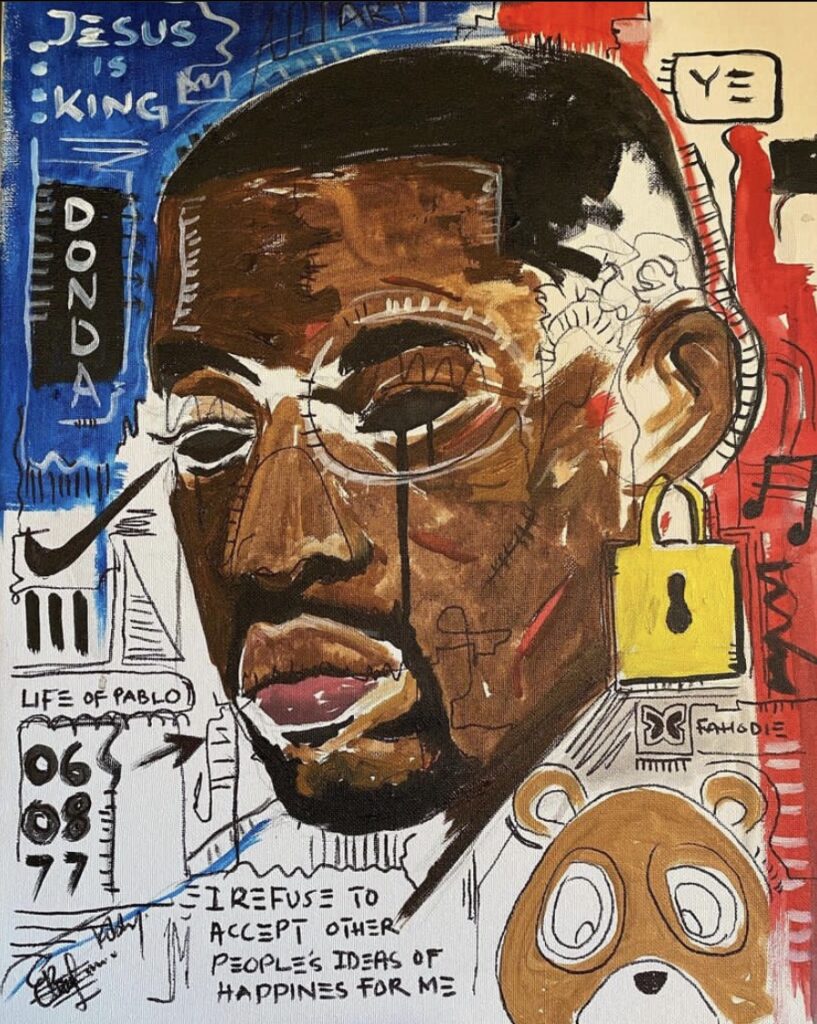
Could you share some insights into your creative process? From the initial spark of an idea to the final digital artwork, what are the key stages and considerations?
I never truly know what the final piece will be. Once I’m inspired and have done all my research, something takes over. When I’m in front of the canvas, it’s like I’m no longer myself — I surrender to the spirit guiding me, and I keep creating until it decides to leave.
You’ve exhibited in significant spaces in Accra like Lokko House and Kukun, as well as the Art Gala in East Legon. What were those experiences like, showcasing your work in your home country?
Exhibiting my work at places like Lokko House, Kukun and the Art Gala in East Legon has been both humbling and powerful. There’s a unique magic in presenting my art in the very environment that shaped me—where each piece is tied to my roots. The community’s reactions, the dialogues that followed, and the energy within those spaces reminded me of my purpose as an artist. What I especially love is seeing how people interpret my work differently—it reflects the beauty of our varied perspectives and how uniquely we all experience the world.
Digital art offers a unique set of tools and possibilities. What do you find most compelling about this medium, and are there any specific techniques or software you particularly enjoy working with?
Sharing my work online is quicker and more convenient than working on traditional canvases. I enjoy using Procreate and Photoshop, and I paint digitally in a way that feels just like working on a real canvas.
Looking back at your artistic evolution, are there any particular pieces or series that you feel represent a significant turning point or a breakthrough in your artistic voice?
I’ve always painted with purpose, not for applause. Each piece I create is a blessing—a moment frozen in time that allows me to express my journey, my freedom, and my life.
What are some of the central themes or narratives you find yourself consistently drawn to in your art? Are there any messages you hope viewers take away from your work?
Freedom, honesty, and calling things as they are—that’s what drives my work. I often use surreal imagery to capture and express the emotions I feel.
How do you see the digital art scene evolving, both globally and within Ghana, and what role do you hope to play in its future?
Much better! When I first started, artists like Ian Quhachi, Bright Ackwerh, Kweku Darko, and Adobe Messiah were already making waves. I want to inspire creatives to create fearlessly—to show the world that art isn’t just something you make, it’s something that can make you.
What are your aspirations for the future of your artistic career? Are there any specific projects, collaborations, or exhibitions you’re currently excited about?
The future is now, and I’m open to collaborating with fashion brands, musicians, and galleries. I also envision creating a gallery space that gives emerging artists a platform to showcase their talent.
